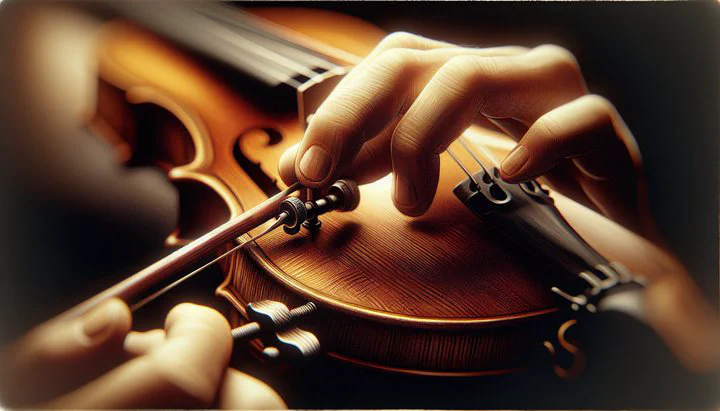Changing E String Violin Impact

Understanding the Importance of the E String
Have you ever noticed how a single string can transform your music? The E string on a violin might be small, but it plays a big role in your sound. The changing E string violin impact is huge because this string is key to your instrument’s brightness and playability. When you play, the E string delivers those high, sparkling notes that make your music shine. It’s often the first string to catch a listener’s attention and can greatly affect how your entire violin sounds.
Why is the E string often the first to be changed? Well, it endures a lot of stress. Violinists, even at professional levels, find that changing out the E string before other strings can enhance their performances. The E string is thinner and more delicate than the others, which means it wears out faster. This string can quickly lose its brilliance and tone, impacting the overall quality of the music you produce.
The E string affects your violin’s tone and performance in unique ways. It provides the highest pitches and can be very expressive, which is why its quality is so noticeable. If you’ve ever thought, “My strings lose their brilliance after about 3-5 weeks,” you’re not alone. Many musicians notice this change first with the E string. Keeping it fresh and vibrant can keep your entire violin sounding its best, helping your music to come alive with every stroke of the bow.
In the world of violins, the impact of changing the E string extends beyond just sound. It can influence your confidence as a player. When your violin sounds great, you feel great playing it! So, understanding the importance of the E string can make all the difference, whether you’re practicing at home or performing on stage.
When to Change Your E String
Knowing when to change your E string can make a big difference in how your violin sounds and feels. The changing E string violin impact is most noticeable when the string starts to lose its brightness and clarity. If you’ve ever found yourself thinking, “My strings lose their brilliance after about 3-5 weeks,” it might be time to consider a change.
How often you need to change your E string depends on how much you play. If you’re practicing every day or performing often, your E string will wear out faster. I’ve heard some pros change the E string more often, sometimes even every few weeks, to keep their sound sharp and clear. They know that a fresh E string can really make their music pop.
Watch for signs that your E string needs replacing. If it sounds dull or you notice a drop in sound quality, it’s probably time. Also, look for any physical wear like fraying or unraveling. By keeping an eye on these things, you can ensure your violin always sounds its best.
Remember, changing out the E string before other strings can be a smart move. It helps maintain your violin’s overall tone and responsiveness. The E string is like the star of the show, and you want it to shine brightly every time you play. So, keep track of how your violin sounds and don’t hesitate to change the E string when needed for the best musical experience.
Cost-Effective String Maintenance
Taking care of your violin strings, especially the E string, doesn’t have to be expensive. In fact, changing E string violin impact can actually be a cost-effective strategy. The E string is usually less expensive than the other strings, so changing it more often can save you money in the long run. Changing out the E string before other strings helps keep your violin sounding its best without breaking the bank.
High-quality strings can be pricey, but they’re worth it for the sound they produce. However, if you’ve ever thought, “This could save on cost given the price of top quality strings,” you’re on the right track. By focusing on the E string and changing it as needed, you can maintain excellent sound quality without having to replace the entire set frequently. This approach balances maintaining your instrument’s tone and your budget.
To extend the life of your strings, make sure to clean them regularly. After playing, wipe your strings down with a soft cloth to remove rosin and sweat, which can cause them to wear out faster. Also, store your violin in a stable environment where temperature and humidity won’t damage the strings.
Listening to your violin and paying attention to its sound can help you decide when to change strings. If you notice a loss of brilliance and clarity, particularly with the E string, it might be time for a replacement. This way, you can enjoy the best sound possible without having to change all your strings at once.
In conclusion, keeping your E string fresh and vibrant is a smart way to manage costs while ensuring top-notch performance. By focusing on this small but mighty string, you can keep your violin sounding beautiful and your wallet happy. So, don’t hesitate to make that change when you notice the impact on your music.